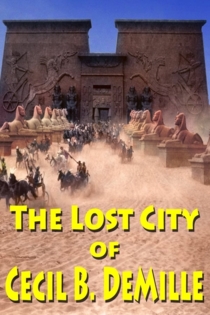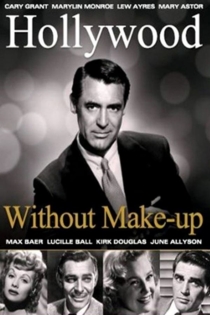
Cecil B. DeMille
1881 - 1959It was DeMille who created the image of the omnipotent director, megaphone in hand, wearing boots and a visored cap. DeMille gave Hollywood numerous stars: Wallace Reid, Gloria Swanson, William (“Hopalong Cassidy”) Boyd, Claudette Colbert, Robert Preston, Jean Arthur, and Charlton Heston.
DeMille created the posts of studio story editor, art director, and concept artist. He was one of the first to use theatrical lighting on a movie set. In the late 1920s, when Hollywood converted to sound films, DeMille defied the sound experts, liberating the camera from a confining booth, and implementing the microphone boom.
DeMille’s authority extended beyond the confines of his studio. He was a power in aviation, banking, politics, and real estate. In the 1930s, his fame as a filmmaker was surpassed by his fame as a radio star.
He was a founder of the Academy of Motion Picture Arts and Sciences, an institution from which he eventually won two awards. In 1953 his film The Greatest Show on Earth won the Award for Best Picture of 1952; and he was presented with the Irving G. Thalberg Memorial Award.
DeMille’s influence on world culture is incalculable, but there are estimates and milestones. His biography of Jesus Christ, The King of Kings, was a silent film, but because of a unique distribution arrangement, it was eventually seen by 800 million viewers. Samson and Delilah (1949) and The Ten Commandments (1956) are still listed with the top ten all-time box-office champions. They continue to generate revenue and provoke thought.
Hollywood Out-takes and Rare Footage
Stanley Sheff, Bruce Goldstein
Gig Young, Bud Abbott
Out-takes (mostly from Warner Bros.), promotional shorts, movie premieres, public service pleas, wardrobe tests, documentary material, and archival footage make up this star-studded voyeuristic look at the Golden age of Hollywood during the 30s, 40, and 50.
Hollywood Out-takes and Rare Footage
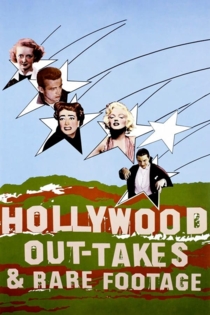
The Ten Commandments
Cecil B. DeMille
Charlton Heston, Yul Brynner
Escaping death, a Hebrew infant is raised in a royal household to become a prince. Upon discovery of his true heritage, Moses embarks on a personal quest to reclaim his destiny as the leader and liberator of the Hebrew people.
The Ten Commandments
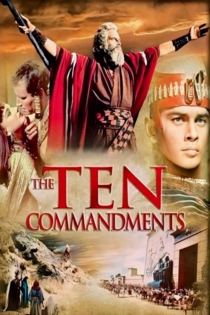
The King of Kings
Cecil B. DeMille
H.B. Warner, Dorothy Cumming
The King of Kings is the Greatest Story Ever Told as only Cecil B. DeMille could tell it. In 1927, working with one of the biggest budgets in Hollywood history, DeMille spun the life and Passion of Christ into a silent-era blockbuster. Featuring text drawn directly from the Bible, a cast of thousands, and the great showman’s singular cinematic bag of tricks, The King of Kings is at once spectacular and deeply reverent—part Gospel, part Technicolor epic.
The King of Kings

Hail Satan?
Penny Lane
Lucien Greaves, Jex Blackmore
A look at the intersection of religion and activism, tracing the rise of The Satanic Temple: only six years old and already one of the most controversial religious movements in American history. The Temple is calling for a Satanic revolution to save the nation's soul. But are they for real?
Hail Satan?
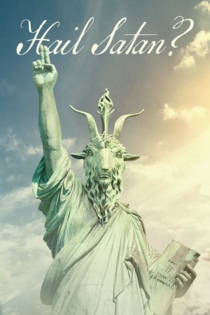
The Godless Girl
Cecil B. DeMille
Lina Basquette, Tom Keene
High school students led by the Girl and Boy turn from Christianity toward secret atheistic meetings. When a girl is accidentally killed by a stairway collapse, the Girl and Boy go to reform school where they are treated brutally.
The Godless Girl

And the Oscar Goes To...
Jeffrey Friedman, Rob Epstein
Anjelica Huston, Annette Bening
The story of the gold-plated statuette that became the film industry's most coveted prize, AND THE OSCAR GOES TO... traces the history of the Academy itself, which began in 1927 when Louis B. Mayer, then head of MGM, led other prominent members of the industry in forming this professional honorary organization. Two years later the Academy began bestowing awards, which were nicknamed "Oscar," and quickly came to represent the pinnacle of cinematic achievement.
And the Oscar Goes To...
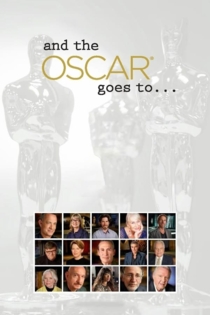
Union Pacific
Cecil B. DeMille
Barbara Stanwyck, Joel McCrea
One of the last bills signed by President Lincoln authorizes pushing the Union Pacific Railroad across the wilderness to California. But financial opportunist Asa Barrows hopes to profit from obstructing it. Chief troubleshooter Jeff Butler has his hands full fighting Barrows' agent, gambler Sid Campeau; Campeau's partner Dick Allen is Jeff's war buddy and rival suitor for engineer's daughter Molly Monahan. Who will survive the effort to push the railroad through at any cost?
Union Pacific

Fool's Paradise
Cecil B. DeMille
Dorothy Dalton, Conrad Nagel
In a Mexican border town Arthur befriends cantina girl Poll. She falls for him but he still loves the dancer Rosa. When the cigar Poll gives him explodes and blinds him, Arthur is duped into thinking Poll is Rosa and marries her. When his vision is surgically restored, he leaves for Siam to find Rosa.
Fool's Paradise

Unconquered
Cecil B. DeMille
Gary Cooper, Paulette Goddard
England, 1763. After being convicted of a crime, the young and beautiful Abigail Hale agrees, to escape the gallows, to serve fourteen years as a slave in the colony of Virginia, whose inhabitants begin to hear and fear the sinister song of the threatening drums of war that resound in the wild Ohio valley.
Unconquered

Gladiateur, glaive et fantasmes
Jérôme Korkikian
Julien Bocher, Hervé Lacroix
The silent cinema had already created colossal movies based on ancient civilizations, but it is in the 1950s when peplums reach their apogee in Hollywood. Then, peplums take root at Cinecittà studios, in Rome, where cheap cinema is produced with bodybuilders as heroes. The genre decays in the late 1960s, but rises again decades later, when a modern classic is released in 2000.
Sword-and-Sandal

The Golden Bed
Cecil B. DeMille
Lillian Rich, Henry B. Walthall
Femme fatale Flora marries a titled European to save the family planation. Her husband and a rival fall to their deaths in a glacier. Next Flora weds her sister Margaret's love Admah. She bleeds him dry, until he goes to prison.
The Golden Bed


